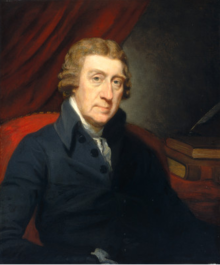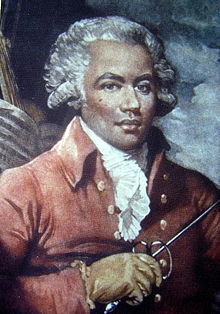Samuel Adams’s Surviving Sister and Brother
In 1742, when Mary Adams was in her mid-twenties, she married a tailor named James Allen. She was his second wife. In 1751 Robert Treat Paine addressed Allen as “Merchant. Taylor living on the Draw Bridge, Boston.”
The Allens’ children included:
- Samuel (1743-1830), treasurer of Worcester County for about forty years.
- Joseph (1749-1827), reportedly his uncle Samuel’s favorite, clerk of the courts in Worcester County for more than thirty years and a member of the U.S. Congress for five months.
- Mary (1754-1842), who married the Rev. Joseph Avery of Holden.
Samuel’s one surviving younger sibling was his brother Joseph, born at the end of 1728 and thus six years younger. I started looking into the Adams genealogy after a question about this man from an unnamed commenter a few months back.
Joseph Adams followed Samuel to Harvard College, joining the class of 1748. That means there’s a brief profile of him in Sibley’s Harvard Graduates. At college Joseph was a bit of a party boy, once pounding down a door “in a riotous Manner, at Night,” and another time engaging in “contemptuous hollowing” at midnight after a sleigh ride and tavern supper.
After graduating, Joseph Adams trained in medicine. The first documentation of his profession might be that 1751 letter from Robert Treat Paine to James Allen, which offered “My Service to your Spouse and to Dr. Adams.” Paine was a year behind Adams at Harvard.
In 1753 the Boston Overseers of the Poor voted to make Joseph Adams the first “Doctr. for the Alms House,” both “Physition & Chirurgeon.” He was chosen again in 1754 and 1755. In all the Overseers recorded paying Adams about £260 in the currency of the time.
In 1754 Joseph Adams married a woman named Elizabeth Hill. In April 1759, when he was thirty, the doctor was sick enough to make out his will. He died sometime in the next few weeks or months because his estate was probated in September. I found no mention of his death in the newspapers, and no indication he left children.
In October 1764, the widow Elizabeth Adams married Gawen Brown (1719-1801), a “Clock and Watchmaker lately from London” in 1749. She was his third wife. He had six children from his first marriage; one, the future artist Mather Brown, from his second; and six more with Elizabeth. The best known of the last batch was William Hill Brown (1765-1793), author of the scandalous roman à clef The Power of Sympathy.
Since 1763 Brown had been established on King Street. Late in that decade he built and installed the clock that still keeps time in the tower of the Old South Meeting-House (works shown above). Timepieces bearing Brown’s signature are in the collections of the Massachusetts Historical Society and Revolutionary Spaces.
As a native of Britain with continuing business ties there, Gawen Brown appears to have been wary of independence, so much so he’s been labeled the “Tory Clockmaker.” There’s even a latter-day report he returned to Britain during the war, but I can’t pin that down.
Despite that loyalty, Samuel Adams entrusted correspondence to the clockmaker’s namesake son, “young Mr Gawen Brown,” in October 1775. (So did John Adams, though we know his judgment about couriers wasn’t perfect.) I think Samuel Adams was willing to do that because he was a sort of uncle to the young men: Gawen Brown, Jr., was Adams’s late brother’s widow’s stepson.
The younger Gawen Brown followed his father into the trade of importing watches. During the war he seems to have bounced around: a captain of marines in 1776, an officer in Col. Henry Jackson’s Continental regiment in 1778, on state expeditions against Crown strongholds at Newport and Penobscot. Later he commanded the Independent Company of Cadets. This Brown died in Petersburg, Virginia, around the start of 1789.
Later that year, the 11 June Independent Chronicle carried a legal notice about the division of some property in Maine. It was signed by Samuel Adams, Gawen and Elizabeth Brown in her right, Joseph Allen, Samuel Allen, and Joseph and Mary Avery in her right—all the remaining heirs of Samuel Adams’s father.



